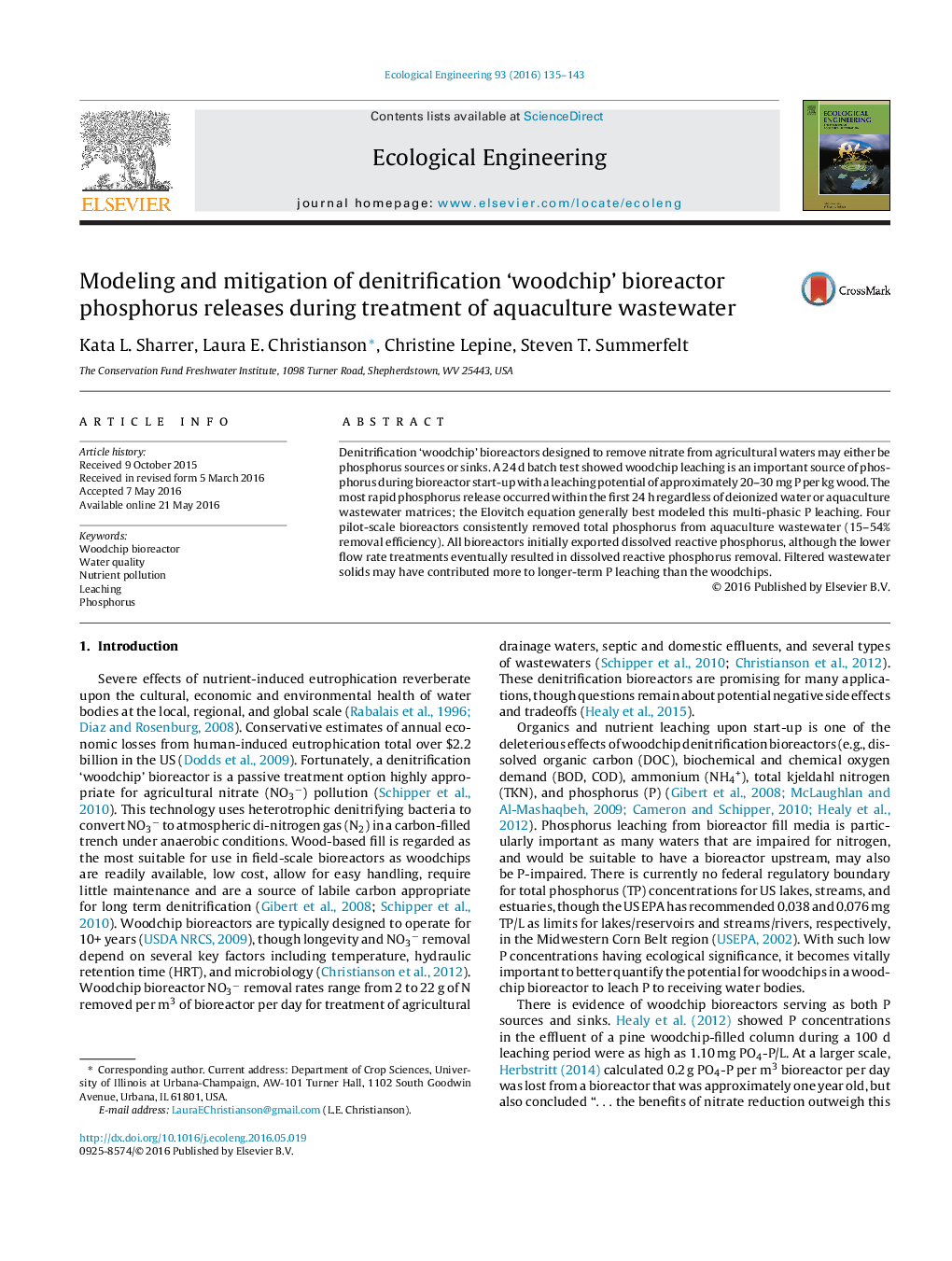| Article ID | Journal | Published Year | Pages | File Type |
|---|---|---|---|---|
| 4388722 | Ecological Engineering | 2016 | 9 Pages |
•Woodchip bioreactors that remove nitrate from water can export P.•Batch tested woodchips leached approximately 20–30 mg P per kg wood over 24 d.•The most rapid P leaching occurred within the first 24 h.•Dissolved P loss transitioned to removal in slow flowrate bioreactors (by d 100).•Pilot-scale bioreactors showed 15–54% Total P removal from aquaculture wastewater.
Denitrification ‘woodchip’ bioreactors designed to remove nitrate from agricultural waters may either be phosphorus sources or sinks. A 24 d batch test showed woodchip leaching is an important source of phosphorus during bioreactor start-up with a leaching potential of approximately 20–30 mg P per kg wood. The most rapid phosphorus release occurred within the first 24 h regardless of deionized water or aquaculture wastewater matrices; the Elovitch equation generally best modeled this multi-phasic P leaching. Four pilot-scale bioreactors consistently removed total phosphorus from aquaculture wastewater (15–54% removal efficiency). All bioreactors initially exported dissolved reactive phosphorus, although the lower flow rate treatments eventually resulted in dissolved reactive phosphorus removal. Filtered wastewater solids may have contributed more to longer-term P leaching than the woodchips.
